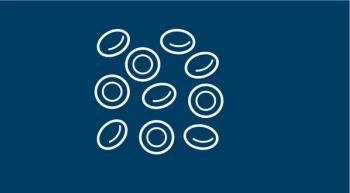
Nurses Establish Paper Chart's Role in Electronic Medical Records
While EMRs have improved clinician workflow in recent years, they are not perfect. Paper charts may still have a place in cancer clinical research.
Most hospitals and clinics have switched to an electronic medical record (EMR) system, though clinicians should not discount the usefulness of old fashion pen-and-paper methods, especially when it comes to cancer clinical trials.
Oncology nurse researchers at the Vanderbilt-Ingram Cancer Center recently developed a shadow chart protocol — using paper charts in addition to their Epic EMR system – for patients who are currently enrolled in cancer clinical research. Ashley Donaway Moncrief, RN, BSN, and Brittney Baer, RN, BSN, presented their findings at the 2020 ONS Bridge virtual meeting.
The shadow chars include a snapshot of important information, some of which is not documented in the EMR. Items include:
- a list of prohibited medicines or dose modifications
- baseline medical history toxicities
- calendar of the patient’s appointments
- assessment schedule
- overflow of individual nurse preference documents
- internal checklists.
This has proved to be beneficial when nurses are seeing patients that they don’t normally treat.
“There may be a bunch of people out for [family leave] or other reasons, so it was really easy to just pick up the chary and go, even though you know nothing about the patient or nothing about the study [they are enrolled on],” Moncrief said in an interview with Oncology Nursing News.
Since multiple documentation systems are used, shadow charts put important information in one easy-to-find place.
“I always think of it as a supplementation or a summary. Because we use so many systems in research, [shadow charts] bring it all together and make it a bit more condensed, rather than having to log on to the computer [many] times, trying to figure out what to do,” Baer said. “So in a way, it works in tandem with the EMR.”
Baer explained that since clinical trial data is proprietary information — meaning the drug company owns it – certain documents, such as patient consents or pill diaries, cannot go into the EMR. The shadow charts house that important information.
Additionally, the shadow charts serve as a backup in the event that the computers are down or the EMR system crashes.
“We’ve had a lot of computer downtime… This will be our downtime procedure and backup plan, ready to go,” Baer said.
Ultimately, these nurses are striving to improve their processes and patient care in any way they can. While the EMR system does have its advantages, shadow charts are just another step in bettering care.
“This research has been our way of saying that we’re fixing things — not that we had a terrible problem, but anybody looks for improvement,” Moncrief said. “So this is one of the ways [we address] handover between teams and improve and correct ourselves.”
Newsletter
Knowledge is power. Don’t miss the most recent breakthroughs in cancer care.
















































































